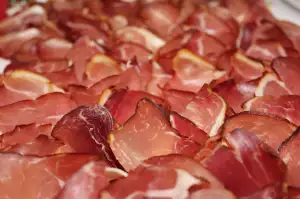Unlocking the Secrets of Nixtamalization: Elevate Your Maize Creations with this Ancient Technique

Nixtamalization is an ancient culinary technique that has been used for centuries to transform maize into a versatile and nutritious ingredient. Derived from the Nahuatl word "nixtamalli," which means "uncooked corn dough," nixtamalization involves soaking maize kernels in an alkaline solution, usually made from water and wood ash or lime. This process not only enhances the flavor and texture of maize but also unlocks its nutritional potential by increasing the availability of essential nutrients like niacin and calcium. Join us on a journey as we explore the secrets of nixtamalization and discover how this time-honored technique can elevate your maize creations to new heights of freshness and flavor.
History and Origins of Nixtamalization
Nixtamalization, the ancient technique of treating maize with an alkaline solution, has a rich history that dates back thousands of years. Originating in Mesoamerica, specifically among the indigenous peoples of Mexico and Central America, nixtamalization was a fundamental process in their culinary traditions.
The exact origins of nixtamalization are difficult to pinpoint, as it predates written records. However, archaeological evidence suggests that this technique was practiced as early as 1500 BCE. The Olmecs, Mayans, and Aztecs all utilized nixtamalization in their maize preparation.
Maize held immense cultural and economic significance for these civilizations. It was not only a staple food but also considered sacred. Nixtamalization played a crucial role in making maize more nutritious and easier to digest. By soaking the maize kernels in an alkaline solution made from water and ashes or lime, the outer hulls were softened and removed, revealing a softer texture and unlocking vital nutrients.
The process of nixtamalization also had practical benefits. It improved the taste of maize by reducing bitterness and enhancing its natural flavors. Additionally, it increased its shelf life, allowing communities to store surplus maize for longer periods.
The knowledge of nixtamalization was passed down through generations within indigenous communities. It became an integral part of their cultural identity and culinary heritage. Today, nixtamalization continues to be practiced by traditional cooks who value preserving ancient techniques.
Understanding the history and origins of nixtamalization allows us to appreciate its significance in Mesoamerican cultures. It is a testament to the ingenuity and resourcefulness of these civilizations who developed this technique centuries ago. By embracing this ancient method in our modern cooking practices, we can honor their legacy while elevating our own culinary creations with fresh and flavorful maize.
The Science Behind Nixtamalization
Nixtamalization is not just a traditional cooking technique; it is also rooted in science. When maize kernels are soaked in an alkaline solution, such as lime water, a fascinating chemical reaction occurs. This process, known as nixtamalization, transforms the maize by breaking down its tough outer layer and releasing essential nutrients.
During nixtamalization, the alkaline solution softens the hull of the maize and causes it to swell. This allows for easier removal of the hull, making the kernels more digestible and nutrient-rich. The alkaline solution also changes the pH of the maize, which enhances its nutritional value by increasing the availability of important vitamins and minerals.
Furthermore, nixtamalization alters the structure of proteins in maize, making them more easily digestible. It also increases the bioavailability of niacin (vitamin B3), an essential nutrient that helps prevent pellagra—a deficiency disease common among populations relying heavily on maize as a staple food.
The science behind nixtamalization extends beyond nutrition. The process also improves the texture and taste of maize-based dishes. The alkaline solution breaks down complex carbohydrates into simpler sugars, resulting in a sweeter flavor profile. Additionally, nixtamalized maize has a softer texture, allowing for better absorption of flavors during cooking.
Understanding the science behind nixtamalization highlights its importance in enhancing both the nutritional value and culinary experience of maize-based dishes. By embracing this ancient technique, we can unlock the full potential of maize and elevate our culinary creations to new heights.
Benefits of Nixtamalization in Maize Preparation
Nixtamalization offers numerous benefits in maize preparation. Firstly, it enhances the nutritional value of maize by increasing the availability of essential nutrients like niacin and calcium. This process also improves the digestibility of maize, making it easier for our bodies to absorb its nutrients. Additionally, nixtamalization helps remove toxins such as aflatoxins from maize, ensuring safer consumption. Moreover, this technique imparts a unique flavor and aroma to the maize, elevating the taste of dishes prepared with nixtamalized corn. Overall, incorporating nixtamalization into maize preparation not only enhances its nutritional profile but also enhances its overall quality and taste.
Traditional Nixtamalization Techniques
The process of nixtamalization has been practiced for centuries, with various traditional techniques developed by different cultures. One common method involves soaking maize kernels in an alkaline solution, usually made from slaked lime or wood ash mixed with water. The maize is then cooked and left to rest overnight.
During this resting period, the alkaline solution breaks down the tough outer hull of the maize and releases important nutrients. It also softens the kernels, making them easier to grind into masa, a dough-like substance used in many traditional dishes.
Another traditional technique involves boiling the soaked maize in water until it reaches a specific consistency. This method requires constant stirring to prevent burning and ensure even cooking.
These traditional techniques not only enhance the flavor and texture of the maize but also increase its nutritional value. The alkaline solution helps release niacin, an essential B vitamin that is otherwise difficult for our bodies to absorb from raw maize.
By preserving these traditional nixtamalization techniques, we can unlock the full potential of maize and create delicious and nutritious dishes that pay homage to our culinary heritage.
Modern Nixtamalization Methods
Modern Nixtamalization Methods have evolved over time to make the process more efficient and convenient. One common method is using a solution of calcium hydroxide or calcium oxide to soak the maize kernels. This alkaline solution helps soften the outer hull and break down the pericarp, making it easier to remove. The soaked maize is then rinsed thoroughly to remove any remaining hulls and debris.
Another modern technique involves using pressure cookers or steamers to speed up the cooking process. By applying high heat and pressure, the maize can be nixtamalized in a fraction of the time compared to traditional methods.
Some chefs also experiment with adding different ingredients to the nixtamalization process, such as herbs, spices, or even beer, to infuse unique flavors into the maize.
These modern methods not only save time but also allow for greater control over the nixtamalization process, resulting in consistent and high-quality maize for various culinary creations.
Nixtamalization in Contemporary Cuisine
Nixtamalization has not only stood the test of time but has also found its place in contemporary cuisine. Chefs and food enthusiasts around the world are rediscovering the magic of this ancient technique and incorporating it into their modern creations.
In upscale restaurants, you may find dishes like nixtamalized maize tortillas served alongside gourmet fillings such as braised short ribs or roasted vegetables. The unique flavor and texture of the nixtamalized maize add a delightful twist to these traditional favorites.
Food trucks and street vendors have also embraced nixtamalization, offering mouthwatering tacos made with freshly ground masa dough. The process of nixtamalization enhances the taste and aroma of the corn, resulting in tacos that are bursting with flavor.
Nixtamalized maize is not limited to savory dishes alone. Pastry chefs have started experimenting with this technique, creating delectable desserts like cornbread made from nixtamalized cornmeal or sweet tamales filled with fruits and nuts. These innovative treats showcase the versatility of nixtamalization in contemporary culinary creations.
The resurgence of interest in nixtamalization is not just limited to professional kitchens. Home cooks are also embracing this ancient technique, using it to elevate their homemade tortillas, tamales, and other maize-based dishes. By incorporating nixtamalized maize into their everyday cooking, they can enjoy the authentic flavors and nutritional benefits that come with it.
In conclusion, nixtamalization has found a place in contemporary cuisine due to its ability to enhance flavor, texture, and nutritional value. Whether you're dining at a high-end restaurant or cooking at home, embracing this ancient technique will undoubtedly elevate your maize creations to new heights of freshness and flavor.
Exploring Different Dishes Made with Nixtamalized Maize
Nixtamalization opens up a world of culinary possibilities, allowing for the creation of various dishes that showcase the unique flavors and textures of nixtamalized maize. One popular dish is tamales, where the nixtamalized maize dough is filled with savory or sweet fillings and then wrapped in corn husks before being steamed to perfection.
Another beloved dish is pozole, a hearty soup made with nixtamalized maize kernels cooked in a flavorful broth along with meat and spices. The result is a comforting and delicious meal that is often enjoyed during festive occasions.
Tortillas are perhaps the most well-known use of nixtamalized maize. These thin, flatbreads are made by grinding the nixtamalized maize into masa dough, which is then pressed into round shapes and cooked on a hot griddle. The result is a versatile staple that can be used as a base for tacos, enchiladas, or simply enjoyed on its own.
Sopes are another popular dish that showcases nixtamalized maize. These thick tortilla-like bases are topped with various ingredients such as beans, cheese, meat, or salsa, creating a delicious and satisfying snack or meal.
Nixtamalization also plays a crucial role in the production of corn chips and tortilla chips. The process enhances the flavor and texture of the corn used to make these crunchy snacks, making them even more enjoyable.
By embracing nixtamalization in our cooking, we can unlock an array of dishes that celebrate the natural flavors and nutritional benefits of maize. From tamales to tortillas, each bite becomes an experience that connects us to ancient traditions while delighting our taste buds with fresh and flavorful creations.
In conclusion, nixtamalization is a time-honored technique that unlocks the full potential of maize. By soaking and cooking maize in an alkaline solution, this ancient process enhances its nutritional value, flavor, and texture. Nixtamalization not only improves the digestibility of maize but also increases the availability of essential nutrients like niacin and calcium. Embracing this traditional method allows us to create fresh and flavorful dishes that celebrate the rich heritage of maize while elevating our culinary creations. So let's unlock the secrets of nixtamalization and experience the true essence of maize in all its glory.
Published: 23. 11. 2023
Category: Food



